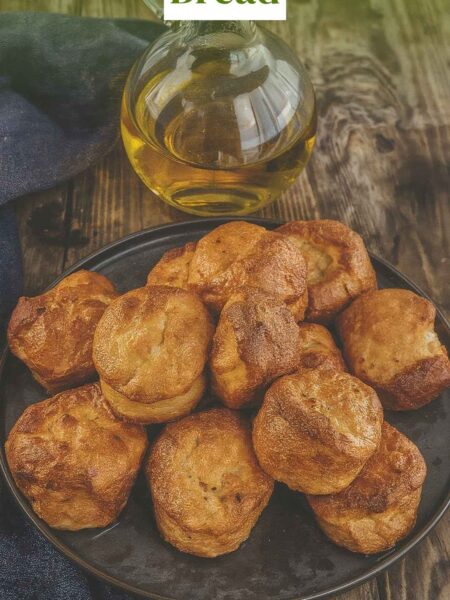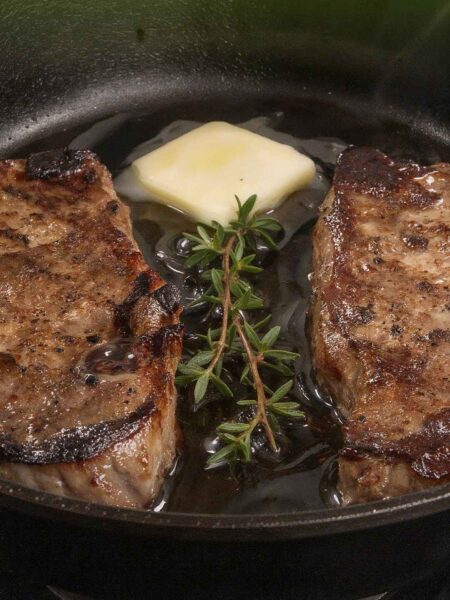When I think about colorful side dishes that turn an everyday meal into something special, sweet and sour red cabbage always comes to mind. Recently, I served this vibrant dish alongside succulent roast duck, and let me tell you, it was a delicious pairing.
The richness of the duck pairs perfectly with the tangy crunch of the cabbage, creating a balance that dances on the palate. If you’re looking for a recipe that adds sophistication to your dinner table while being easy to prepare, look no further.
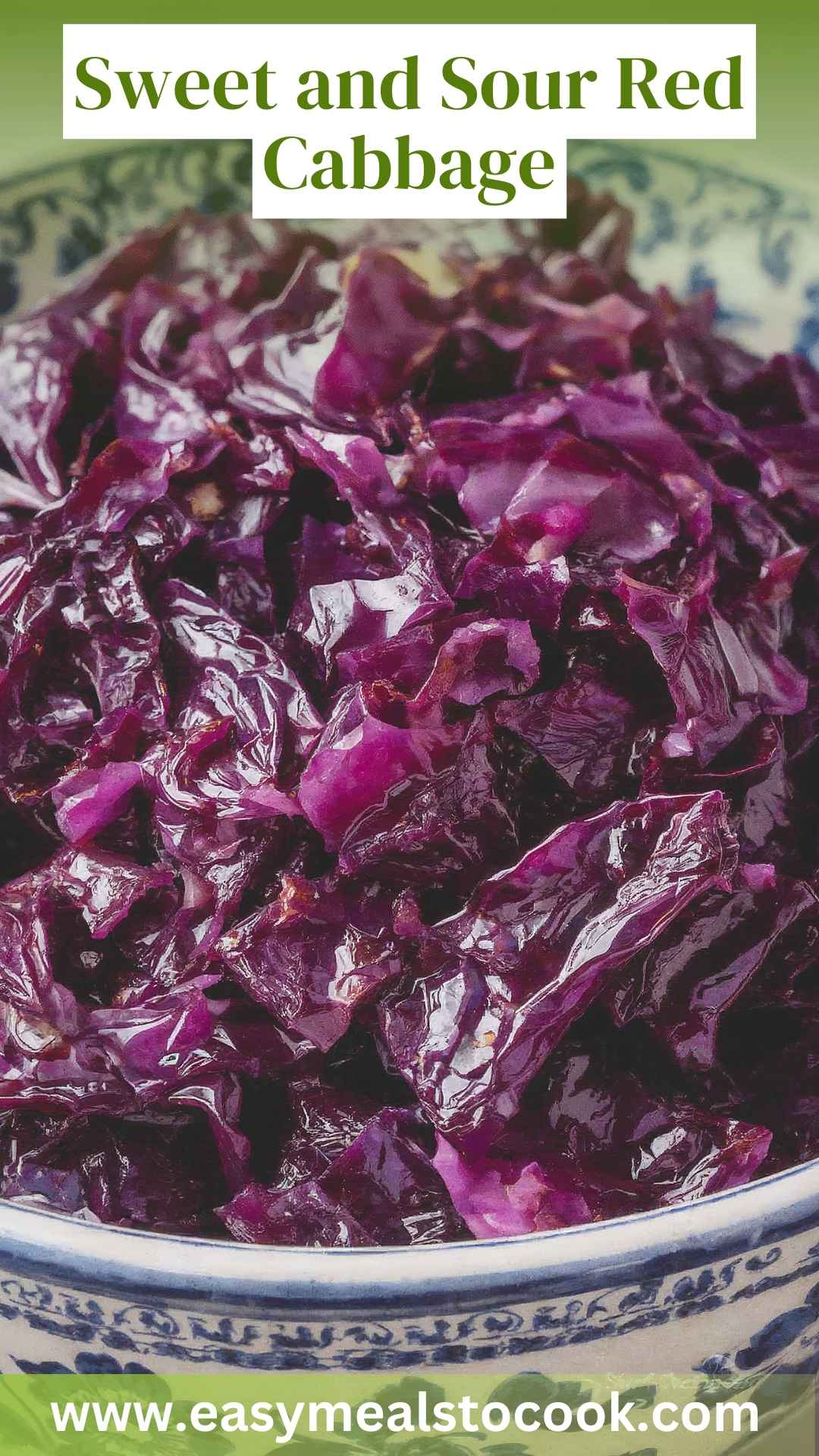
What is Sweet and Sour Red Cabbage?
Sweet and sour red cabbage is a delightful side dish that combines the deep colors and nutritional benefits of red cabbage with a sweet and tangy flavor profile. This dish hails from various culinary traditions, particularly European cuisine, where pickling and sweetening vegetables were common practices.
The balance of sweetness from sugar and the tartness from vinegar transforms humble cabbage into a vibrant entrée. It’s not just about the flavor; the eye-catching color and crispness make it a showstopper.
The Ingredients
To create this sumptuous dish, you’ll need:
- 1/2 medium red cabbage, thinly sliced about 1/4-inch thick
- 2 tablespoons unsalted butter
- 2 tablespoons brown sugar
- 1/4 cup aged balsamic vinegar
- 1 small apple, peeled and thinly sliced (optional, adds a touch of sweetness and texture)
- 1/2 teaspoon caraway seeds (optional, for a subtle aromatic flavor)
- Kosher salt, to taste
- Freshly ground black pepper, to taste
These ingredients are a harmonious blend that brings depth to the cabbage, making it enjoyable for even those who think they don’t like vegetables.
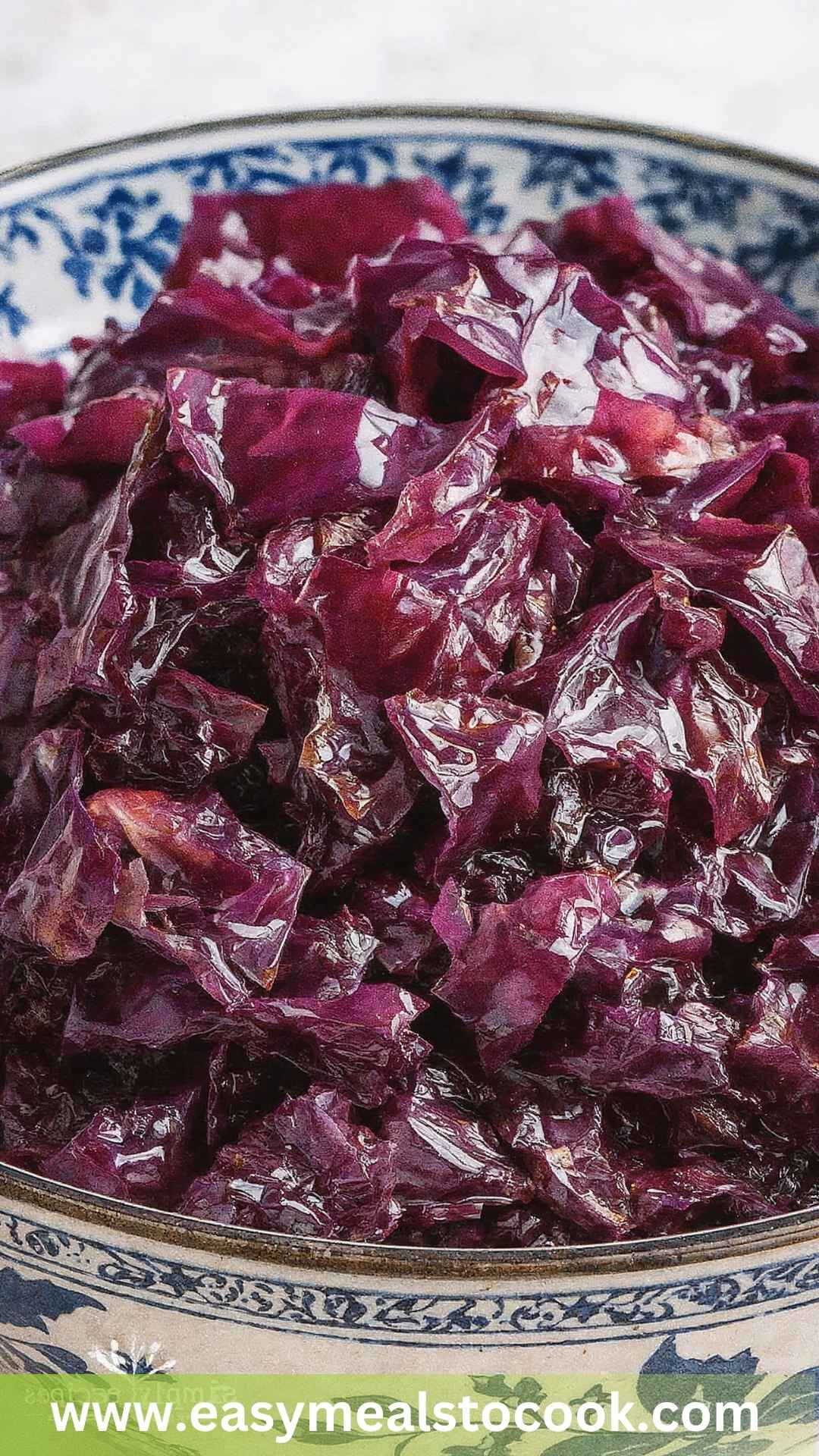
How to Make Sweet and Sour Red Cabbage
Making sweet and sour red cabbage is straightforward. You’ll find it requires minimal effort yet rewards you with plenty of flavor. Ready to experience a culinary adventure? Let’s dive into the step-by-step process!
Step 1: Prepare the Cabbage
Start by removing any outer leaves from the red cabbage. Although they may look fine, they can be tough and papery. Once you’ve revealed the tender inner leaves, cut the cabbage in half. Lay the flat side down on your cutting board for stability. Using a sharp knife, slice the cabbage into thin strips, ideally around 1/4 inch thick. As you work, enjoy the vivid purple hue and the crunchy texture.
Step 2: Sauté the Cabbage
In a large skillet or wide pot, melt the unsalted butter over medium heat. Once it’s bubbly and fragrant, add the sliced cabbage. Stir it gently with a wooden spoon, making sure each piece is coated with butter. This step is crucial; it transforms the cabbage from raw to tender. Sauté for about 5 minutes, just enough for the cabbage to soften slightly while maintaining some crunch.
Step 3: Sweeten the Dish
After the cabbage has begun to wilt, sprinkle the brown sugar over the top. The sugar not only adds sweetness but also enhances the cabbage’s natural flavor. Stir it in until it’s fully dissolved. This quick cook will help caramelize the sugar, creating a delightful glaze that clings to the cabbage.
Step 4: Add Vinegar and Seasoning
Following that, pour in the aged balsamic vinegar. This gives the dish its signature tang. If you opted for the apple, now is the time to toss in the thinly sliced pieces. They will add extra sweetness and a pleasant texture. Stir everything together, then add the caraway seeds if you’re using them. Season generously with kosher salt and freshly ground black pepper to enhance the dish’s flavors.
Step 5: Simmer to Perfection
Lower the heat and cover the skillet. Let the cabbage simmer for about 10 to 15 minutes. This step is essential as it allows the flavors to meld and the cabbage to become tender yet not mushy. Check occasionally, stirring to make sure nothing sticks to the pan. The cabbage should turn a deeper color and become glossy as it absorbs the vinegar and sugar.
Step 6: Taste and Adjust
Once the cabbage is tender, it’s time to taste your creation. Perhaps you need a bit more salt or a touch of sugar to match your palate. Stir once again to combine any adjustments, and your sweet and sour red cabbage is ready to serve!
Notes
Here are some handy tips to ensure your sweet and sour red cabbage turns out perfectly every time:
- Don’t skip the butter: This adds richness and flavor that complements the cabbage beautifully.
- Experiment with vinegars: If you don’t have balsamic vinegar on hand, apple cider vinegar works well and imparts a different sort of flavor.
- Add more fruits: Sliced pears or raisins can also add a nice sweetness if you’re feeling adventurous.
- Allow it to sit: This dish tastes even better the next day, allowing flavors to meld together.
- Monitor cooking time: Cooking times may vary depending on how tender you like your cabbage, so adjust as needed.
Storage Tips
If you find yourself with leftovers (which is rare, but it can happen!), sweet and sour red cabbage stores well in the refrigerator. Place it in an airtight container, and it should keep for about 3 to 5 days. When reheating, add a splash of water in the skillet to rehydrate it.
Nutrition Information
This dish is not only delicious but also packed with nutrients! Red cabbage is an excellent source of vitamin C, vitamin K, and has antioxidant properties. Here’s a rough overview per serving if you make 4 servings from this recipe:
- Calories: 80
- Fat: 3g
- Carbohydrates: 16g
- Fiber: 4g
- Sugar: 6g
- Protein: 2g
What a fantastic way to add healthy veggies to your plate!
Serving Suggestions
Sweet and sour red cabbage is versatile and makes a great companion for numerous dishes. Here are a few ideas:
- Roast Duck: The richness of the duck works wonders with the tangy cabbage.
- Meatloaf: A slice of meatloaf paired with a side of this cabbage creates a cozy, comforting meal that hits the spot.
- Pork Chops: Grilled or pan-fried pork chops take on a new life with the refreshing crunch of cabbage.
- Grilled Sausages: Whether it’s bratwurst or Italian sausages, the contrast of spicy and sweet will delight your taste buds.
- Vegetable Stir-Fry: If you’re serving a medley of Asian flavors, the cabbage can add a zesty term to your plate alongside rice or noodles.
What Other Substitutes Can I Use in Sweet and Sour Red Cabbage?
If you’re missing an ingredient or simply want to play with flavors, here are five substitutes for the ingredients used in sweet and sour red cabbage:
- White Cabbage: If you can’t find red cabbage, white cabbage can serve as a fine alternative. You’ll lose some of the vibrant color, but the flavor will still shine.
- Coconut Sugar: If brown sugar isn’t available, coconut sugar can provide a similar sweetness with a hint of caramel notes.
- Rice Vinegar or White Wine Vinegar: For a different flavor profile, substituting balsamic vinegar with rice or white wine vinegar can work well.
- Honey: In place of brown sugar, a little honey can add sweetness. Just mix it in with the balsamic vinegar as it heats.
- Fennel Seeds: Should you not have caraway seeds, fennel seeds offer a lovely flavor twist, albeit a bit sweeter.
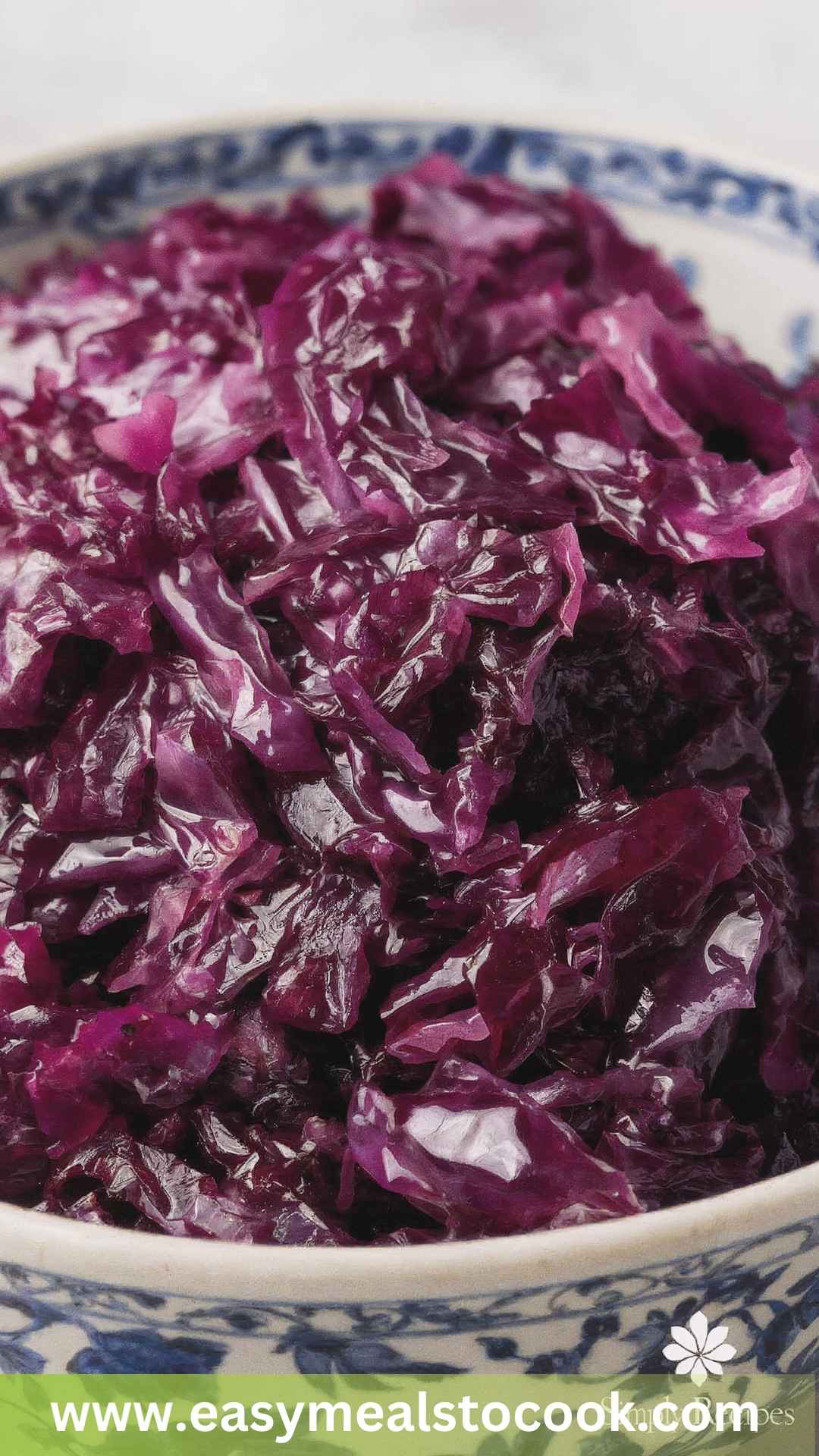
Conclusion
Sweet and sour red cabbage is more than just a colorful side dish; it’s a blend of flavor and nutrition that brightens any meal. Whether you pair it with savory meats or make it the star of the table, its delightful taste is a testament to the beauty of simple ingredients.
Creating this dish is not only fulfilling in the kitchen but also provides a visual feast. I encourage you to give it a try. You might just become a fan like I am, making it a regular feature on your dining table. So, grab that cabbage and get cooking!
You’ll also like the following recipes!
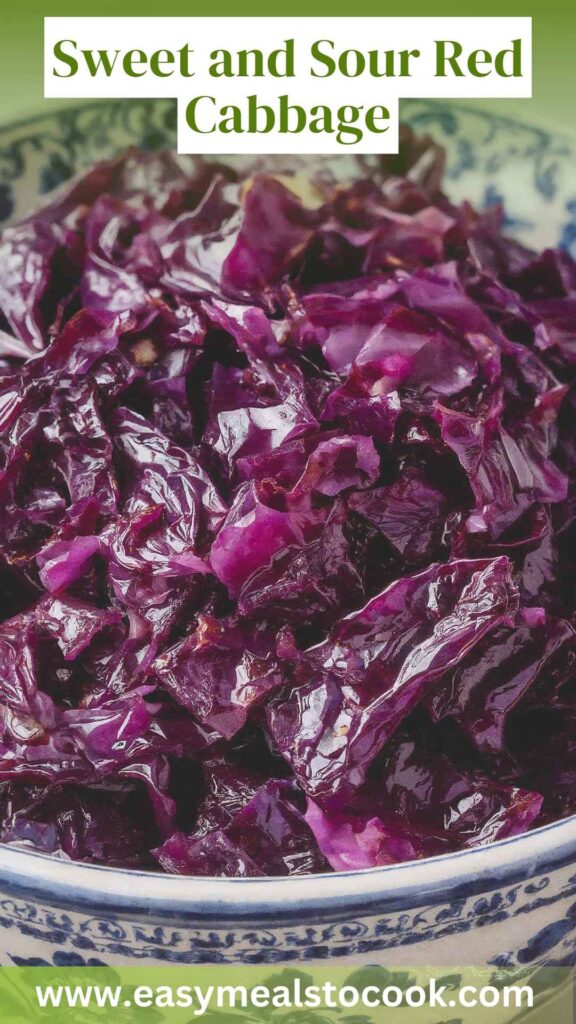
Sweet and Sour Red Cabbage – Easy Meals To Cook
Description
When I think about colorful side dishes that turn an everyday meal into something special, sweet and sour red cabbage always comes to mind. Recently, I served this vibrant dish alongside succulent roast duck, and let me tell you, it was a delicious pairing.
Ingredients
Instructions
Step 1: Prepare the Cabbage
-
Start by removing any outer leaves from the red cabbage. Although they may look fine, they can be tough and papery. Once you’ve revealed the tender inner leaves, cut the cabbage in half. Lay the flat side down on your cutting board for stability. Using a sharp knife, slice the cabbage into thin strips, ideally around 1/4 inch thick. As you work, enjoy the vivid purple hue and the crunchy texture.
Step 2: Sauté the Cabbage
-
In a large skillet or wide pot, melt the unsalted butter over medium heat. Once it’s bubbly and fragrant, add the sliced cabbage. Stir it gently with a wooden spoon, making sure each piece is coated with butter. This step is crucial; it transforms the cabbage from raw to tender. Sauté for about 5 minutes, just enough for the cabbage to soften slightly while maintaining some crunch.
Step 3: Sweeten the Dish
-
After the cabbage has begun to wilt, sprinkle the brown sugar over the top. The sugar not only adds sweetness but also enhances the cabbage’s natural flavor. Stir it in until it’s fully dissolved. This quick cook will help caramelize the sugar, creating a delightful glaze that clings to the cabbage.
Step 4: Add Vinegar and Seasoning
-
Following that, pour in the aged balsamic vinegar. This gives the dish its signature tang. If you opted for the apple, now is the time to toss in the thinly sliced pieces. They will add extra sweetness and a pleasant texture. Stir everything together, then add the caraway seeds if you’re using them. Season generously with kosher salt and freshly ground black pepper to enhance the dish’s flavors.
Step 5: Simmer to Perfection
-
Lower the heat and cover the skillet. Let the cabbage simmer for about 10 to 15 minutes. This step is essential as it allows the flavors to meld and the cabbage to become tender yet not mushy. Check occasionally, stirring to make sure nothing sticks to the pan. The cabbage should turn a deeper color and become glossy as it absorbs the vinegar and sugar.
Step 6: Taste and Adjust
-
Once the cabbage is tender, it’s time to taste your creation. Perhaps you need a bit more salt or a touch of sugar to match your palate. Stir once again to combine any adjustments, and your sweet and sour red cabbage is ready to serve!
Nutrition Facts
Servings 4
- Amount Per Serving
- Calories 80kcal
- % Daily Value *
- Total Carbohydrate 16g6%
- Dietary Fiber 4g16%
- Sugars 6g
- Protein 2g4%
* Percent Daily Values are based on a 2,000 calorie diet. Your daily value may be higher or lower depending on your calorie needs.
Note
- Don’t skip the butter: This adds richness and flavor that complements the cabbage beautifully.
- Experiment with vinegars: If you don’t have balsamic vinegar on hand, apple cider vinegar works well and imparts a different sort of flavor.
- Add more fruits: Sliced pears or raisins can also add a nice sweetness if you're feeling adventurous.
- Allow it to sit: This dish tastes even better the next day, allowing flavors to meld together.
- Monitor cooking time: Cooking times may vary depending on how tender you like your cabbage, so adjust as needed.




